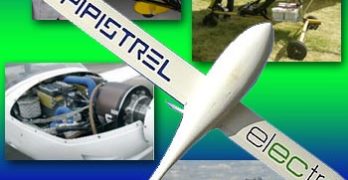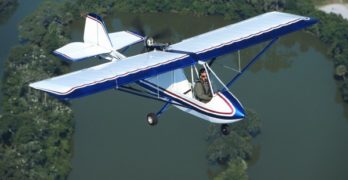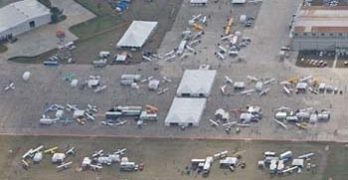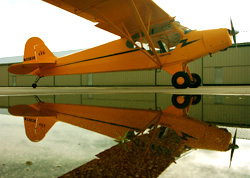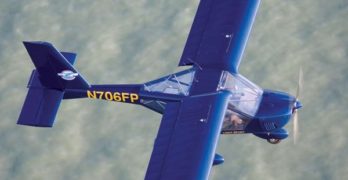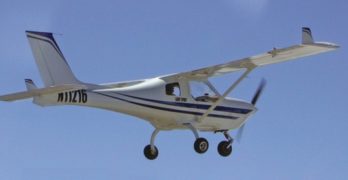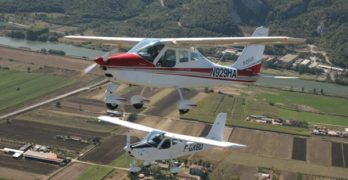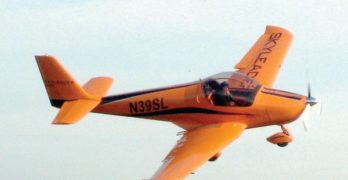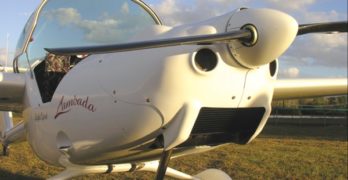What on Earth could something called nanoballs have to do with flying Light-Sport Aircraft? Potentially great news, that’s what. *** Since the early 1990s I’ve followed developments in nanotechnology. This word refers to manufacturing at the atomic scale and many believe it will significantly alter the world in the next decade or two. Some nanoscale developments will come sooner. One such innovation could help power LSA. *** Recently I’ve written about electric-powered aircraft. In lieu of a fuel tank, electric airplanes carry lithium ion batteries. Charging such batteries (the kind in your laptop) takes time. That’s because it involves detaching lithium ions from the cathode at one end of the battery and absorbing them at the anode. Moving the ions to or from the cathode is normally a slow process. So, after you fly your electric LSA for one or two hours, you’ll then have an hours-long wait before you can go aloft again.
Search Results for : electric
Not finding exactly what you expected? Try our advanced search option.
Select a manufacturer to go straight to all our content about that manufacturer.
Select an aircraft model to go straight to all our content about that model.
Successful Low-Cost Light Planes
“I started the company in 1983, and I still own it,” reports Dave Goulet, the main man behind the Challenger aircraft design and Quad City Ultralight Aircraft Corporation. “In fact,” he adds, “it’s probably the oldest ultralight company still under the same management. “After reviewing all the ultralight companies I can think of, I’m inclined to agree.”
Thinking of other long-term operations, Goulet mentions The New Kolb Aircraft Company, whose roots are also planted deep, but even that storied company has now changed ownership… twice in the last decade, and most recently just a couple years ago.
Quicksilver Mfg. has been around longer, but the revolving door of managers and several changes of ownership have long since taken that familiar brand out of contention for continuous leadership.
About the only challenge to Challenger’s continuity reign that I can think of would be Chuck Slusarczyk, designer of the Hawk series, and his company, CGS Aviation.
Sebring 2009; Kicking Off a New Year for LSA
Despite a widespread financial funk, the Sebring U.S. Sport Aviation Expo — commonly referred to as the Sebring LSA Expo — is fast approaching. This #5 Sebring starts the year and has become a place where new aircraft debuts are staged. Yes, a few exhibitors have pulled out to conserve cash. But most aircraft you want to see will be present. *** Paradise will have their new hand control P-1. A CTLS with the new Garmin 696 installed will be on display. An upgraded Remos GX will show…and the list goes on. *** One new LSA entry you’ll see will be the all-American Lightning LS-1 (photo) from Arion Aircraft. Though powered by Australia’s Jabiru engine the entire airframe is Made-in-the-USA. I flew a kit-built version and was highly impressed by its performance and handling. Lightning’s speed range was one of the widest I’ve ever experienced.
Cub Trio Aims to Fill the Sky with LSA
Triplet LSA Cubs entering the market show the popularity of this venerable design. First approved as an SLSA was the Legend Cub which offers many features desired by those who love J-3 Cubs. Shortly after Legend came approval for the Savage Cub and the CubCrafters Sport Cub
should follow soon. Watch for my review of all three in EAA’s October 2005 Sport Pilot and Light-Sport Aircraft magazine. One differentiating factor between the three are their choices of engine. Both Legend and CubCrafters use the 100-hp Continental O-200 while Legend plans to offer the 120-hp Jabiru 3300 as well. Savage offers the 100-hp Rotax 912S. All offer electric starting (not on an original Piper J-3) and each has significantly improved performance and comfort.
FPNA’s Roomy A-22 Valor
Ukraine Design Meets Florida Know-How
Early in the new millennium, I took a trip to Kiev, Ukraine. My mission was to visit two companies producing
aircraft for what was to become the light-sport aircraft segment. I didn’t
know then that the A-22 I flew with designer Yuri Yakovlev would become a
U.S.-assembled special light-sport aircraft (S-LSA).
Before the fall of the Berlin Wall in 1989, Americans hardly knew Ukraine,
a large and diverse country with a rich aviation heritage that once employed
lots of skilled aviation workers and engineers building large transport aircraft
and fighters. Ukrainians spent decades toiling for the Soviet state, and
most speak Russian today despite having an indigenous Ukrainian language.
Antonov, an aerospace name Americans have come to know, had a massive
Ukraine operation under the Soviet leadership.
When the communists withdrew, tens of thousands of experienced technicians
and engineers found themselves out of work. A few ended up building
little airplanes to earn a living.
Jabiru J-170; Trainer or Recreational Flying
The Jabiru airplanes from Shelbyville, Tennessee-based Jabiru USA are funny airplanes. I don’t mean funny like a joke and I don’t mean the name sounds funny, though it may to those unfamiliar with the Australian brand. The Jabiru models are funny because from a distance they look rather small and they don’t seem to get bigger the closer you get to them.
Despite the illusion, the three Jabiru models that have earned their Special Light-Sport Aircraft (SLSA) credentials are actually quite roomy inside, even for larger American pilots. The J250 is better described as cavernous; it has perhaps the largest interior dimension of any SLSA.
The J170 is smaller, but certainly spacious enough for most occupants. A 45-inch-wide cabin is 5.5 inches wider than a Cessna 172 and it has headroom enough for all but the tallest pilots.
Based on the 2-seat Aussie kit, the J170 is aimed at flight schools.
Tecnam’s All-Metal Italian Beauties
Announced in July ’04, the Light-Sport
Aircraft (LSA) category is still relatively new, and has
yet to celebrate its fourth birthday. But many of the airplanes
getting all the attention today were not born in
the last 3 1/2 years. Many have rather long histories,
some in Europe’s microlight category and others in countries
that have applicable standards.
Among the longest in production is the Tecnam family
of airplanes. The central Italian company reports more
than 2,000 of their light planes flying in what may be the
largest fleet in this market segment. Given this company’s
track record, these airplanes have gone through
rounds of improvement. Our subject this month, the
P2002 Sierra, came from the P-96. The numbers relate to
the year of development and show the low-wing Special
Light-Sport Aircraft (SLSA) from Tecnam has a dozen
years of history.
Costruzioni Aeronautiche Tecnam (the company’s complete
name) is 57 years old and traces its roots back to
the 1950 P48B Astore.
SkyLeader’s Wide-Body LSA
Update Note (2021) — This article published in 2008. The aircraft was then referred to as Skyleader 500. Later this was further upgraded and became the Skyleader 600. Obviously, some information presented below will be dated but much of the flight qualities reporting is still useful. —DJ
Sky Leading KP-5
First, Americans became aware of Kappa. This corporate identity was more easily pronounced than the next company name,
Jihlavan (roughly, “YEE-lah-von”) Airplanes. Now, after new investment and with new global ambitions, the company will be known a “Skyleader Aircraft.” American tongues can relax with this easy reference.
Unchanged are a common owner and the same skilled Jihlavan Airplanes
technicians building the elegant KP-5/Skyleader 500 from the Czech
Republic. It may not be the biggest seller among light sport aircraft (LSA),
but I find it to be one of the finest flying machines in the fleet. Skyleader
plans to standardize the brand around the world and will rename the KP-5
the Skyleader 500.
Lambada’s Choice
Motor Along Economically
Not all light sport aircraft (LSA) are made alike.
You probably knew that already, but consider
the Lambada. This sleek composite 2-seat
shoulder wing is part airplane, part glider and it has
the interchangeable wing tips to prove it.
For a soaring enthusiast like myself, flying the
Lambada gratified a desire I’ve had for years, since I
first saw the Urban Air design at a German airshow. On
January 9, 2008, I went aloft in a Lambada with Josef
Bostik – a former U.S. National Champion hang glider
pilot turned airline captain – at Wallaby Ranch, an
iconic hang glider park in Central Florida where hang
gliders are towed aloft behind specially built ultralights.
The particular Lambada I flew bore N-number
N109UA. Bostik indicated that 108 other Lambada
aircraft are flying around the world, though the
one I flew is the first ’08 model to pass ASTM standard
certification.
T-Bird I and the Future
An Easy-Flying Ultralight
Let’s see. A single-seat plane that can be purchased as an ultralight,
assuming your engine selection doesn’t push it over Part
103’s weight limit, or built from a kit and registered as an
Experimental-class aircraft, or purchased as a light sport aircraft
once the manufacturer meets the ASTM certification. What’s a pilot to do?
That’s the conundrum facing T-Bird I shoppers. This single-seater can be
a Part 103-compliant ultralight when using a Rotax 277, still available on
the used-engine market, though no longer supplied from Rotax’s Austrian
factory. Few prospective owners would select this engine, yet a more powerful
engine would push the T-Bird I over the Part 103 weight limit. Does that
leave only the Experimental amateur-built kit
option?
The answer is no, and yes. To explain this apparent
contradiction, a kit-built T-Bird I with a larger
Rotax engine or the 60-hp HKS 700E engine could
still qualify under the 51% rule.
- « Previous Page
- 1
- …
- 47
- 48
- 49
- 50
- 51
- …
- 67
- Next Page »


